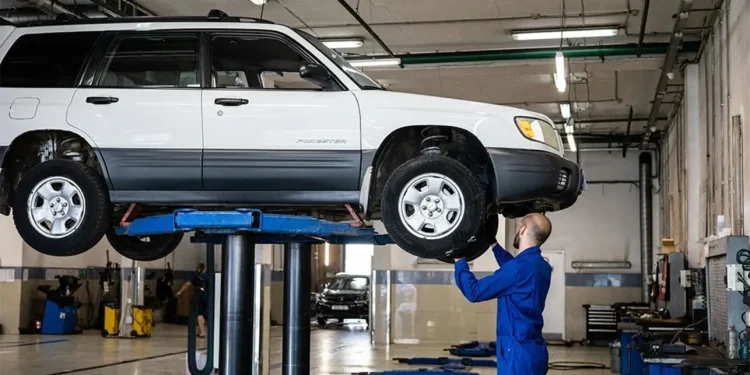Everything You Need to Know About RWC Cars: The Ultimate Guide
If you’re planning to buy a used car in Australia, you’ve probably encountered the term RWC car. But what exactly does RWC stand for, and why is it so important when purchasing a vehicle? In this blog, we’ll dive into the meaning of RWC, its significance, and everything else you need to know about RWC cars.
What Is an RWC Car?
RWC stands for Roadworthy Certificate. An RWC car refers to a vehicle that has passed a series of safety inspections to ensure that it meets the minimum standards for driving on Australian roads. In essence, it’s a certificate issued after a thorough inspection of a vehicle, which certifies that it is safe to drive and roadworthy.
In Australia, it’s a legal requirement for anyone selling a vehicle to provide an RWC before completing the sale. This ensures that the buyer receives a car that is mechanically sound and free of significant defects that could pose a risk to the driver, passengers, or others on the road.
Why Is an RWC Important?
The Roadworthy Certificate is important for several reasons:
1. Safety Assurance: The most critical reason for obtaining an RWC is to ensure the car is safe to drive. The inspection checks the essential components such as brakes, tires, steering, lights, and other crucial safety features.
2. Legal Requirement: In many states, an RWC is mandatory when transferring vehicle ownership. If the car you purchase does not come with a valid RWC, you won’t be able to register it, and you could face fines for driving an unroadworthy vehicle.
3. Protects Both the Buyer and Seller: For buyers, an RWC provides peace of mind, knowing that the car they are purchasing has met safety standards. For sellers, providing an RWC helps avoid any legal complications and ensures that the transaction is straightforward.
4. Enhances the Car’s Value: When a car comes with an RWC, it often signals to potential buyers that the vehicle is in good condition, which can help sell it faster and for a better price.
What Is Checked During an RWC Inspection?
The RWC inspection is a detailed process that covers various safety aspects of the vehicle. Although the exact requirements may vary slightly depending on the state or territory, the following components are typically checked:
· Brakes: The inspector will examine the condition and performance of the brakes, including the brake pads, discs, and brake fluid levels.
· Tires: Tires are assessed for tread depth, condition, and alignment. Worn-out or damaged tires can affect handling and safety, so they must meet specific standards.
· Suspension: The suspension system is inspected to ensure it’s functioning properly and providing a smooth, stable ride.
· Lights and Indicators: All exterior lights, including headlights, brake lights, and turn signals, are tested to ensure they are working.
· Windshield and Wipers: The windshield should be free of cracks that could obstruct the driver’s view. Wipers should also be functioning and in good condition.
· Engine and Exhaust System: The car’s engine is checked for any signs of leaks, and the exhaust system is inspected for efficiency and emissions.
· Frame and Body: The car’s frame should not have any significant damage or rust that could compromise its structural integrity.
· Steering and Alignment: The steering system is checked for responsiveness and any signs of wear that could affect handling.
· Battery: The battery is checked for leaks, corrosion, and its overall condition.
· Fluid Levels: The inspector will check the levels of essential fluids such as oil, transmission fluid, and coolant.
If the car passes all these inspections, the mechanic will issue an RWC, allowing the buyer to proceed with the registration process.
How Long Is an RWC Valid?
An RWC is typically valid for 30 days, although this may vary depending on your location. If the vehicle is not sold within that time frame, it will need to be re-inspected to ensure it still meets the necessary safety standards.
It’s important to note that the RWC does not guarantee the vehicle’s overall reliability or the absence of future mechanical issues. It only certifies that the car is safe to drive at the time of inspection. Therefore, it’s always a good idea to get a comprehensive pre-purchase inspection to identify any potential problems that might arise down the road.
Can You Sell a Car Without an RWC?
In most states and territories of Australia, you cannot legally sell a car without providing an RWC. However, there are exceptions:
· Selling a car without an RWC: In some cases, the seller may sell the car without an RWC, but the buyer will be responsible for obtaining the certificate and paying for the inspection.
· Car Dealers: Registered car dealers often provide an RWC as part of the sale process, ensuring that the vehicle is roadworthy before it is transferred to the buyer.
· Private Sales: In private sales, the seller is usually required to provide an RWC. However, if the seller is selling the car “as is” and does not want to provide an RWC, the buyer may negotiate or agree to purchase the car without it.
How Much Does an RWC Cost?
The cost of an RWC varies depending on the location, type of vehicle, and the mechanic performing the inspection. On average, you can expect to pay anywhere between $100 to $200 for an RWC inspection. This price can increase if the car requires significant repairs to meet roadworthy standards.
Conclusion
When buying a used car in Australia, ensuring that it comes with a valid RWC is essential for your safety and peace of mind. Not only does the Roadworthy Certificate guarantee that the vehicle meets the minimum safety standards, but it also protects both the buyer and seller from legal issues down the road. Always remember to ask for an RWC before purchasing a vehicle, and consider having the car inspected thoroughly to avoid any unexpected surprises after the sale.
















